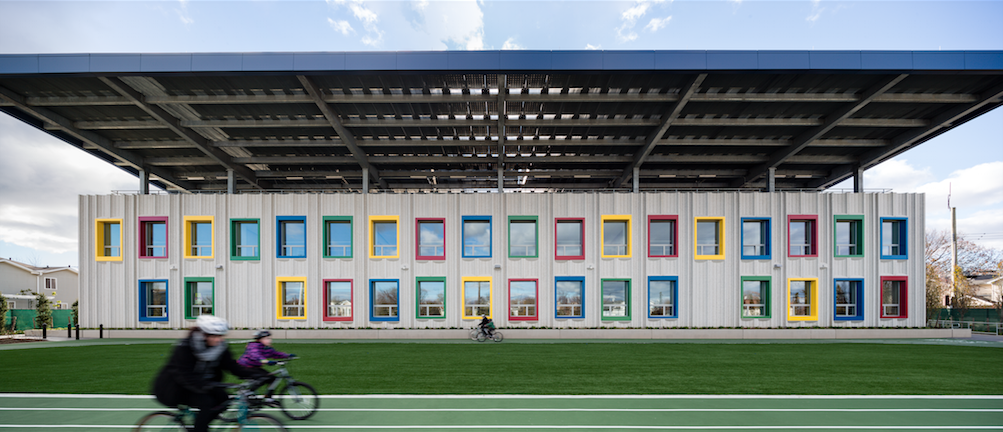Where Zero is the Top Score
Learning Objectives:
- Define net zero energy.
- Define terms relevant to net zero buildings such as “daylight autonomy” and “plug and process loads.”
- Discuss some of the strategies that SOM used to make P.S. 62 ultra-energy-efficient.
- Describe some of the challenges the P.S. 62 project team faced in procuring the latest energy-efficient technology for the building.
Credits:
The ambitious environmental agenda of a new elementary school by Skidmore, Owings & Merrill (SOM) on Staten Island, New York, is obvious from the first encounter: almost 1,600 photovoltaic (PV) panels cloak the 68,000-sqare-foot, two-story structure, covering the south facade, extending over its roof, and cantilevering out to float above a playing field. These PVs, plus about 400 more sheltering a parking area, are expected to generate 662 mWh of electricity per year. This energy should make the building—named P.S. 62, the Kathleen Grimm School for Leadership and Sustainability at Sandy Ground, after a longtime deputy chancellor for education—the first net zero energy school in the northeast.
Continues at architecturalrecord.com »
This course is part of the Education Academy

Photo courtesy SOM / © James Ewing
Modular, prefabricated components of performance-grade engineered bamboo are used for building enclosures to provide high performance, sustainability, and dimensional stability.






